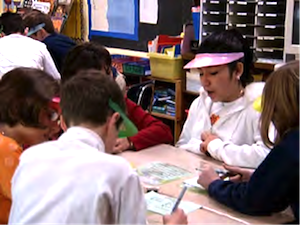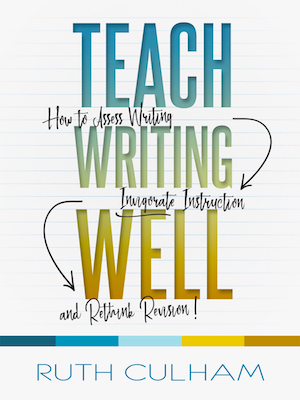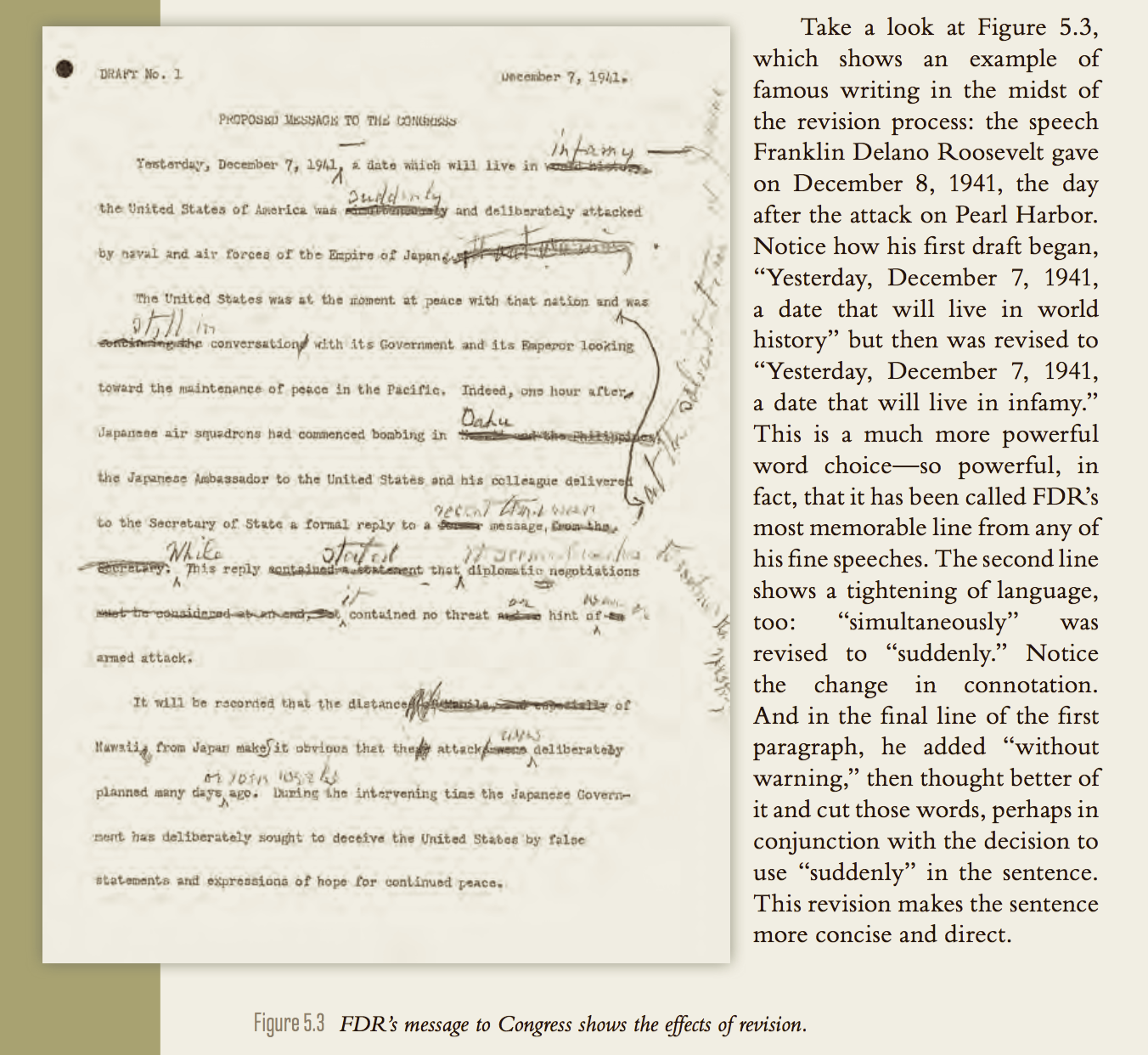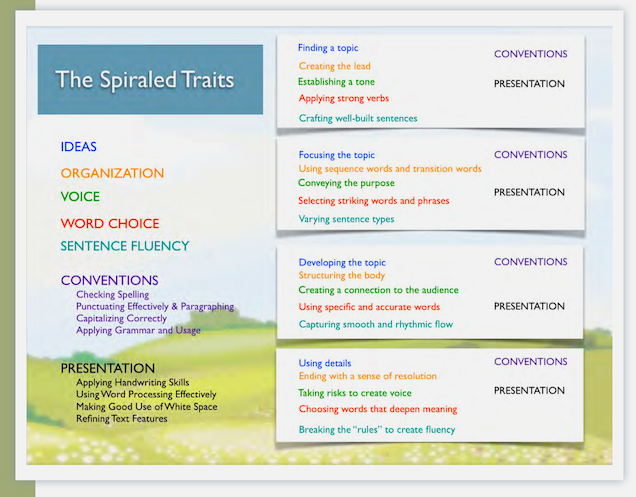Rethinking Revision: The Real Work of Writing
Children don’t hate to write; they hate how we teach writing. Some of the most deeply embedded methods of teaching writing – worksheets, canned prompts, and formulas, for example – drain all of the energy and desire required to write well.
Our classrooms should be places of inquiry, joy, trial and error, exploration, success and failure, and fascinations revealed—where the process of discovery matters as much as (if not more than) the destination.
In my new book from Stenhouse, Teach Writing Well, my goal throughout is to demystify how to teach revision, which is arguably the trickiest part of being a writing teacher. I’ve focused on what we do to invite revision and make it doable for students and teachers alike—from detailed and on-the-spot assessment to purposeful, meaningful instruction.
Students have to be sold on revision
The process of moving from a draft to a more thoughtful, polished copy is where writing transformation occurs—and this is also where we stumble. Students are not excited about rewriting, and we’ve not been as effective as we’d like at helping them through this critical stage.
Think of the writing process this way: the draft is the rehearsal; the first revision is the dress rehearsal; and the final copy (regardless of how badly that dress rehearsal may have gone) is the performance—a joyful performance in which doing what was once considered impossible becomes possible.
Revision looms large and treacherous in the writing process—the Mount Everest of writing instruction. Apart from a few exceptional teachers, we’ve yet to figure out how to scale it. In fact, most teachers struggle with how to teach it, and most students struggle with how to do it.

BASE CAMP – “Revision looms large and treacherous in the writing process – the Mount Everest of writing instruction.”
I’ve found that most students view revision as editing: cleaning up the spelling, capitalization, punctuation, and grammar. These mechanical writing skills are taught and emphasized in their classrooms, so it’s easy to understand why they gravitate toward them.
But revision is much more than mechanical corrections; it’s about clarity and coherence. It’s the ultimate power position in the writing process. Revision is where the real work of writing happens, where the writer starts to transform mere words into tight descriptions, scintillating action, and transparent thinking.
Yet in too many classrooms, revision has not been taught. It has not been modeled. It has not been given enough time. Although the phases of the writing process are prewriting, drafting, revising, editing, and publication, too often what we see in classrooms is this version of the writing process: prewrite, draft, “I’m done.”
What writing teachers know and what students must ultimately embrace is that revision is the stage where writing improves. It’s evident in the word itself: re- means “again” and vision means “see.” See it again. Seeing the writing again with critical eyes is essential for clarifying thinking and moving writing from a rough draft to a polished expression of thought.
Let’s be honest: most students don’t want to see their writing again. Period. That might be why writing progress stalls for many students, or why students lack confidence with writing.
It’s our job to show them how to make their writing clearer by revising in a way that is helpful and doable. Our students need to see that revision actually improves their writing, because—let’s face it—we’ll never convince them to take on this hard work if they don’t.
Revision matters most of all
Writing is thinking aloud on paper. In the same way we continue to clarify our thinking as we read, speak, and listen to others, we need to make sure our writing reflects our best, most thoughtful selves as we rework it through multiple drafts.
Writing is a highly creative process that requires time, effort, and trial-and-error decisions. Revision requires exploring new techniques, incorporating changes, and moving forward—always pushing toward clarity and the strongest piece possible.
No one writes their best, most coherent thoughts in a first draft—no one. Yet so often our students seem to be content with that first draft; the words “I’m done” indicate that students see writing as a finite task and not a process.
So, our first job is to clarify that writing continues to evolve. The writing process is not a step-by-step march—sometimes steps need to be repeated or rethought. Our second job is to provide our students with the time, space, and tools to tackle this pivotal stage of the writing process.
If, for example, writing is always task focused, there is little to no incentive for students to revise. Why take on the challenging task of revision when writing is focused on answering a question, following the prompt, or simply doing the assignment? There is no payoff for students—no evolution of expression—when writing is just about following directions to get it done.
It’s also likely, in task-focused classrooms, that little time is provided for revision. Writing is seen as another box to check on the to-do list of everyday school.
On the other hand, if writing is process focused, teachers can offer students opportunities to explore what they want to write about: what excites them, what interests them, what fascinates them. As a result, students engage in writing with more energy and ownership—and more willingness to make substantive changes.
Anne Lamott explains an organic need to revise this way: “Very few writers know what they are doing until they’ve done it” (1994, 22).
All successful writers revise
I love this July 14, 2015, post from Kate DiCamillo on Facebook:
I usually rewrite a book a total of eight or nine times. Sometimes more. When I’m done, I take all of those drafts and I pile them up and put them in a box and I take them to the Kerlan Collection at the University of Minnesota. They archive the drafts. They make them available for people to look at, to study, to puzzle over.
The drafts are meandering, desperate, coffee-stained, confused, hopeful. They’re a mess. You can see just how hard writing is for me. So when I take the manuscripts in, I think: man, I don’t want anybody to see this. It’s too embarrassing.
But.
I talked with someone once who visited the Kerlan and looked at the first draft of Because of Winn-Dixie. She said, “It was terrible. I was horrified. But I looked at it and I thought ‘If you’re allowed to start a novel this way, then I can start a novel.’”
She did start a novel. She got it published. And that’s why I take the drafts in.
Talk in class about Kate DiCamillo’s courage to expose her writing process to the public. How might students react to knowing that their favorite authors revise over and over again?
Revision vs. editing
It’s important to clarify for students the difference between revision and editing. They are discrete phases of the writing process. As Donald Murray wrote in The Craft of Revision:
We have not been taught how to rewrite. We confuse revision, which is re-seeing, re-thinking, re-saying, with editing, which is making sure the facts are accurate, the words are spelled correctly, the rules of grammar and punctuation are followed” (2013, 2).
When students embrace the revision process, they need to understand that they make choices when they prewrite, draft, get feedback, revise, edit, and publish. We must show and model for students the different options they have not for just writing, but for writing well.
Let’s quickly recap the seven writing traits:
- Ideas: the content of the writing—its central message and the details that support that message
- Organization: the internal structure of the piece—the thread of logic, the pattern of meaning
- Voice: the tone of the piece—the personal stamp, which is achieved through an understanding of purpose and audience
- Word Choice: the precise vocabulary used to convey meaning and enlighten the reader; this contributes to a stronger voice, too
- Sentence Fluency: the way the words sound as they flow through the writing
- Conventions: the mechanical correctness of a piece of writing; this guides the reader through the text
- Presentation: the physical appearance of the final piece of writing—a visually appealing text provides a welcome mat and invites the reader in.
Now look at this list which illustrates the different steps in the writing process and shows how they align to each of the traits. Notice that revision is greedy—five traits (ideas, organization, voice, word choice, sentence fluency) out of seven align with this stage of writing.
- Prewrite: Discover what you want to say (Ideas, Organization, Voice)
- Draft: Get it down (Word Choice, Sentence Fluency)
- Share/Feedback: Find out what worked and what needs work (For one or more traits or the piece as a whole)
- Revise: Rework the text to make it clear (Ideas, Organization, Voice, Word Choice, Sentence Fluency)
- Edit: Make the text readable (Conventions: spelling, capitalization, punctuation, grammar, and paragraphing)
- Finish/Publish: Polish the final appearance (Presentation)
Conventions (spelling, capitalization, punctuation, grammar) and presentation (appearance) are editing skills that require different thinking and teaching than their revision-oriented sister traits.

Should they dive into ideas first, or organization, voice, word choice, or sentence fluency? Or combinations of these traits? How do they know what to tackle first? What are they supposed to do that they haven’t tried already? It can be an overwhelming prospect for teachers and students alike. The question becomes how to make revision doable for students (and teachers) using what they have learned about each of the traits and its key qualities.
You don’t need to teach it all at once
We can begin by differentiating between revision traits and editing traits. Using the terms revision and editing differently and specifically will make it clear which part of the writing process you want students to focus on as they massage their drafts. This will be a big step toward clarity on its own.
However, it takes more than a general understanding; students need to refine skills in both areas, one year to the next in a spiraling curriculum, so their writing deepens and shows more complexity as it matures.

If your goal is only to make the writing look correct, you can edit the writing to mind the manners of the English language (conventions). But good writing—and good writing instruction—is about more than just fixing. It’s about making the message clear and knowing how to move the piece of writing forward by revising it first, then editing for correctness. Each part has its place in the writing process.
And remember: a writer does not have to revise or edit every aspect of a piece all at once, which means you don’t have to suggest revisions and edits on every trait at the same time. In Teach Writing Well, I explore how the revision and editing processes become manageable when we zero in on what matters, one key quality at a time. I call my approach “Squeeze it once and let it go.”

[NOTE: If you’d like to know more about these approaches, go to the Stenhouse book page for Teach Writing Well and click on the blue Preview The Book banner, which opens the entire text for your review. You’ll find the introduction to “squeezes” and “wallets” in Chapter 5, beginning on page 101.]
Making revision a habit will take all year
The bottom line is that it will take the whole school year to teach and practice each of the key qualities of the traits. Will students learn everything there is to know about each of the key qualities during their time with you? Certainly not. But if you provide modeling, creative instruction (no worksheets!), and time to apply new skills—one at a time, over time—in a positive, process-inspired environment, imagine how much your students will understand about revision by the end of the school year.
Think of the writing stamina they will develop as they learn the value of working and reworking a piece for each key quality over time. Then imagine what they will know about writing and how it works if this process is repeated year after year in a spiraling curriculum.
No more “I’m done,” because they will know that writing is never really done—it’s not like baking cookies. Writing is meandering, complicated, and exasperating but also a satisfying, rewarding, never-ending process that students will come to understand and appreciate.
_______________
Ruth Culham, EdD, launched a writing revolution with the publication of her book 6+1 Traits of Writing: The Complete Guide and has written more than 40 professional resources illuminating both writing and the reading-writing connection.

Her newest book, Teach Writing Well, offers specific guidance to teachers on designing lessons that scaffold students toward making their own craft decisions and revisions. This post is adapted from Chapter 5. The illustrations from the book are used with permission.







































I would like to add a thought. Sometimes a writer needs to step back and let the draft rest for a little while before trying to revise. some students think that they must make changes before they can even realize that they need changes. It’s all part of a process. Not a race.
very true, Alisa. Good point.
Love this approach! I wish this material had been around before I retired. But now I can hopefully use it in mentoring situations. Mastery of this should be required of all teachers, every level.
I really like this approach. It is so difficult to get students to see the importance in revising. There are good techniques here to do just that!
I have definitely experienced the diificulty of getting students to truly revise. I now understand more clearly that I need to actually model the revision process. Students need to be able to keep track of the revisions made in their writing as well. I need to rememeber how to do this on a google doc (keep track of all revisions).
There were at least 10 versions of my first novel before I ever attempted to publish. I share this story with my students and they are amazed that it took me 20 years to complete.
This is so on point! Excellent article!